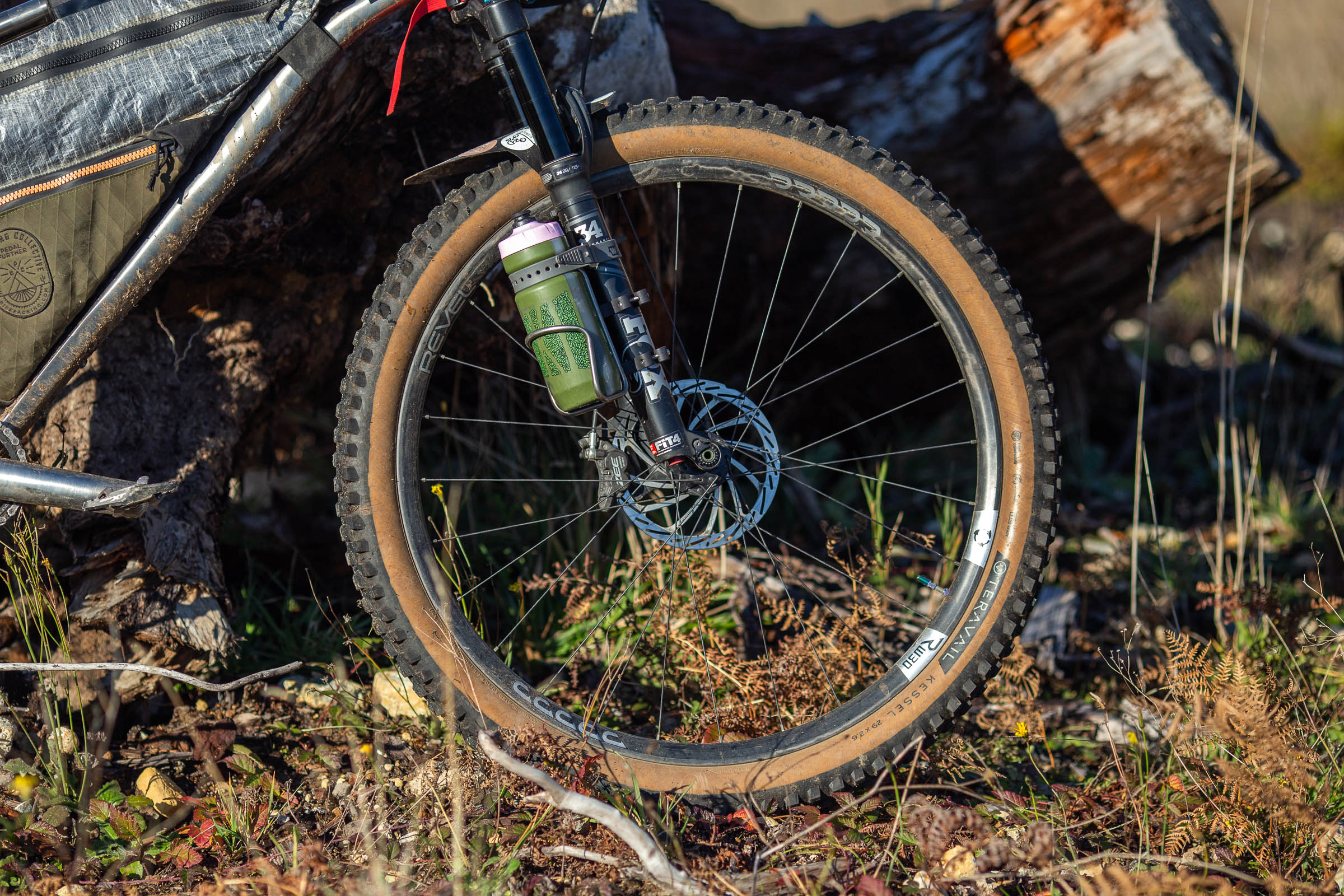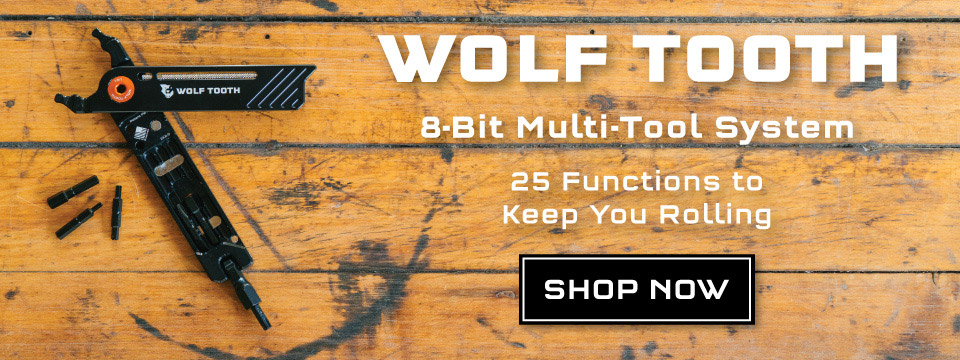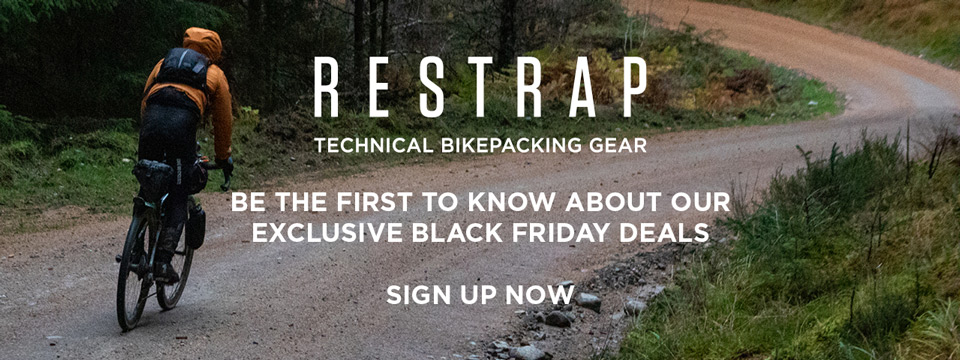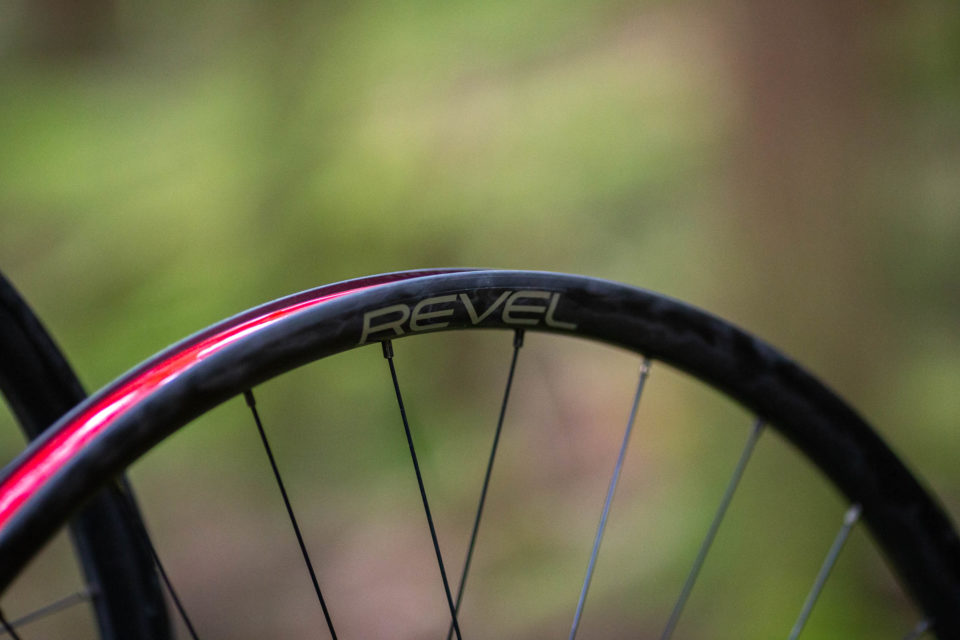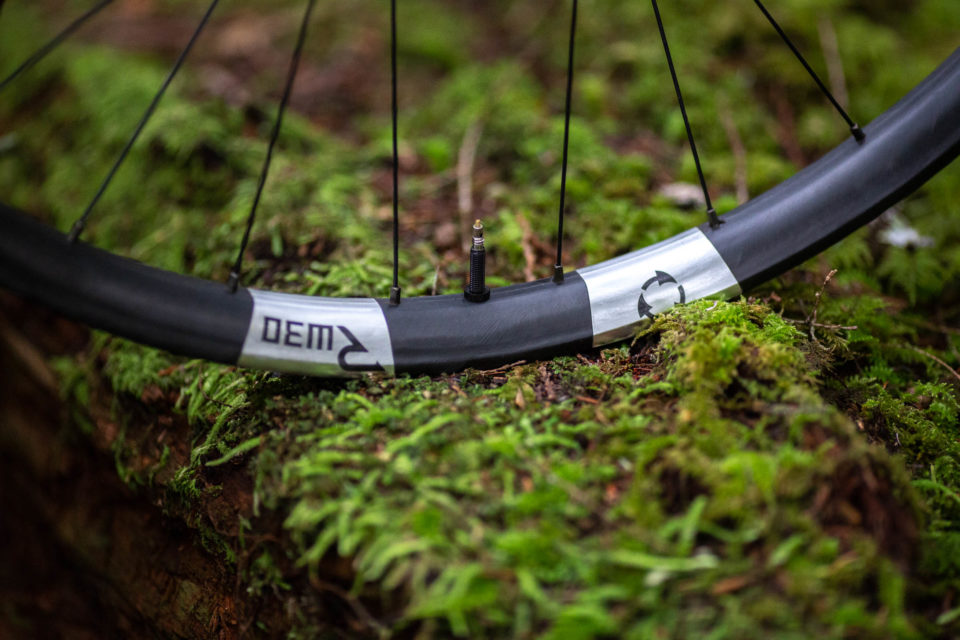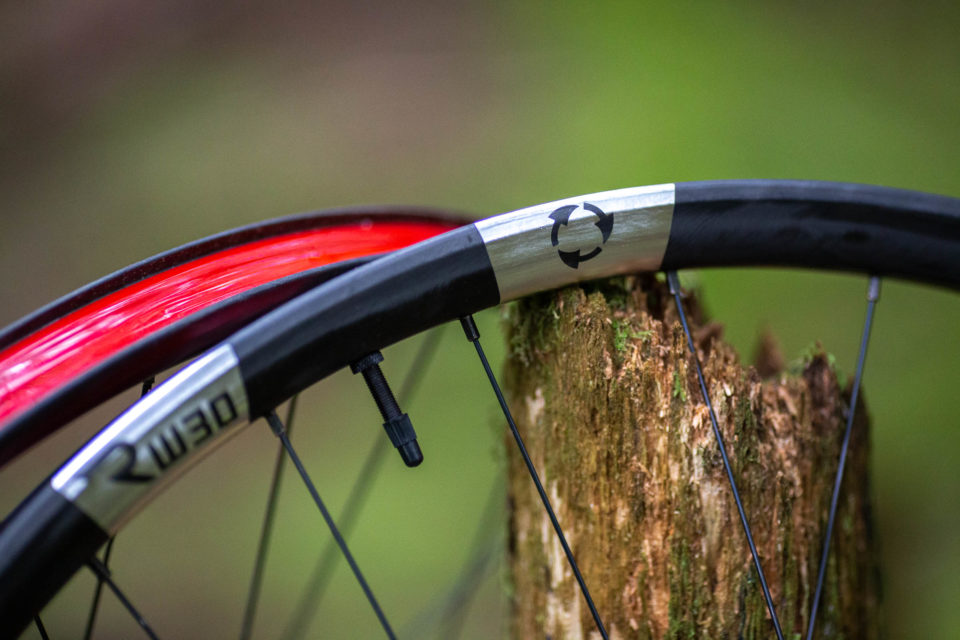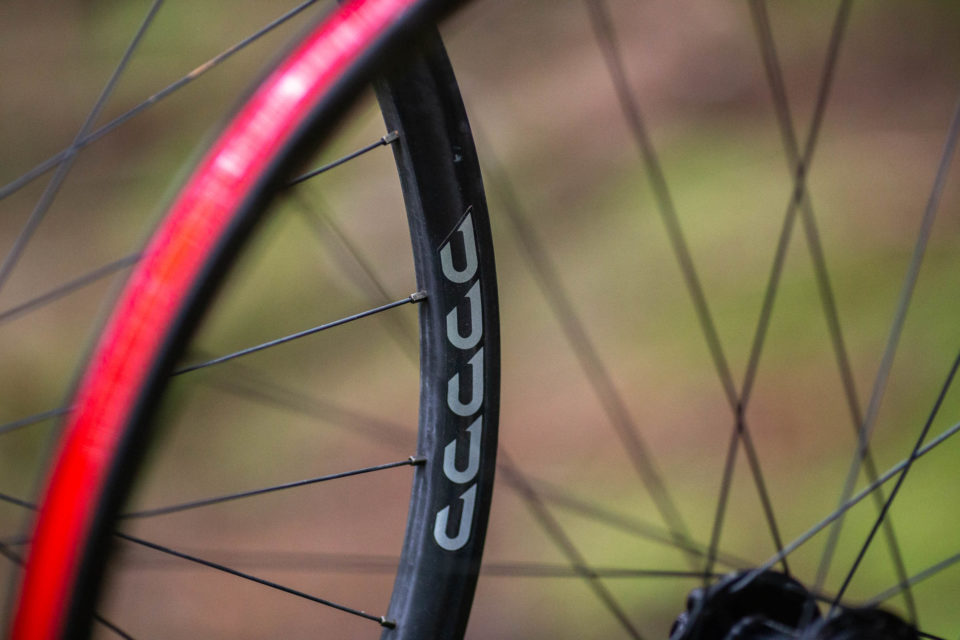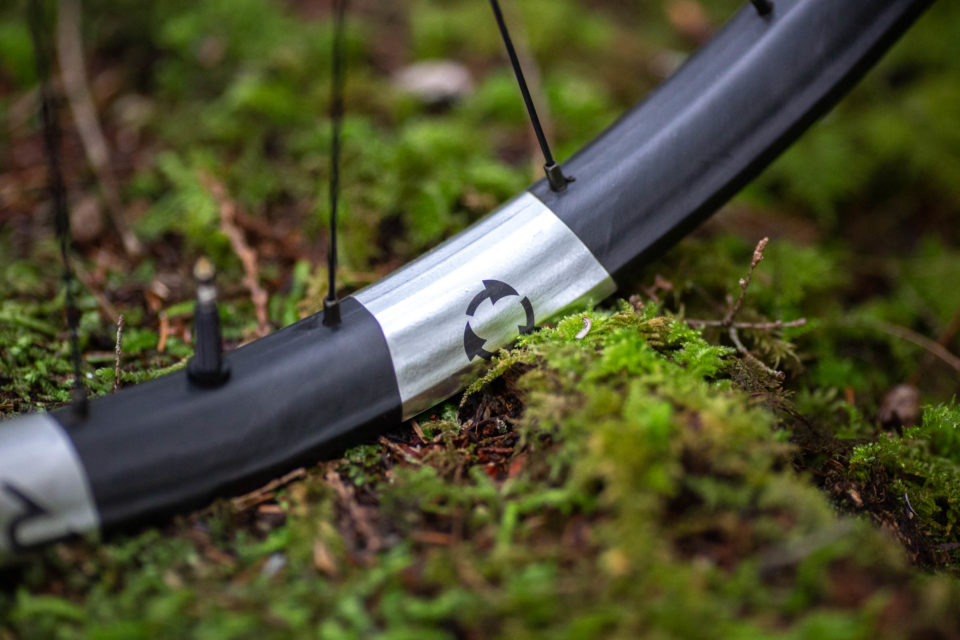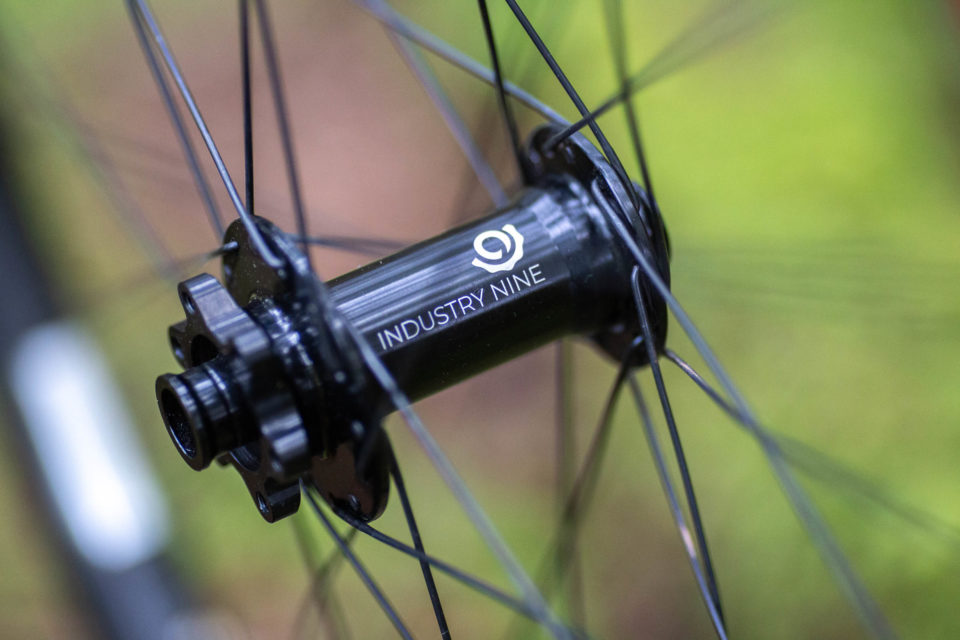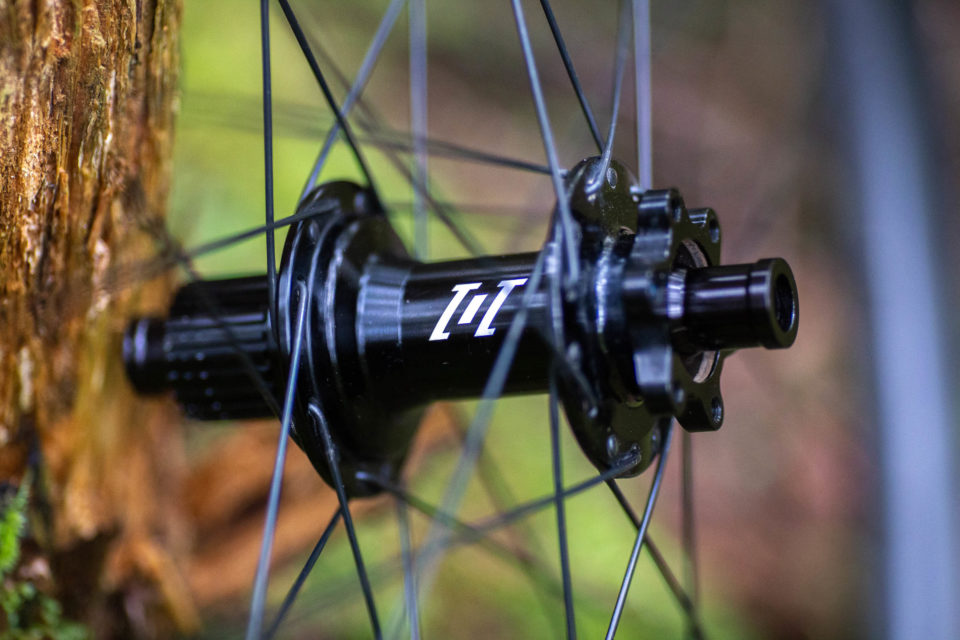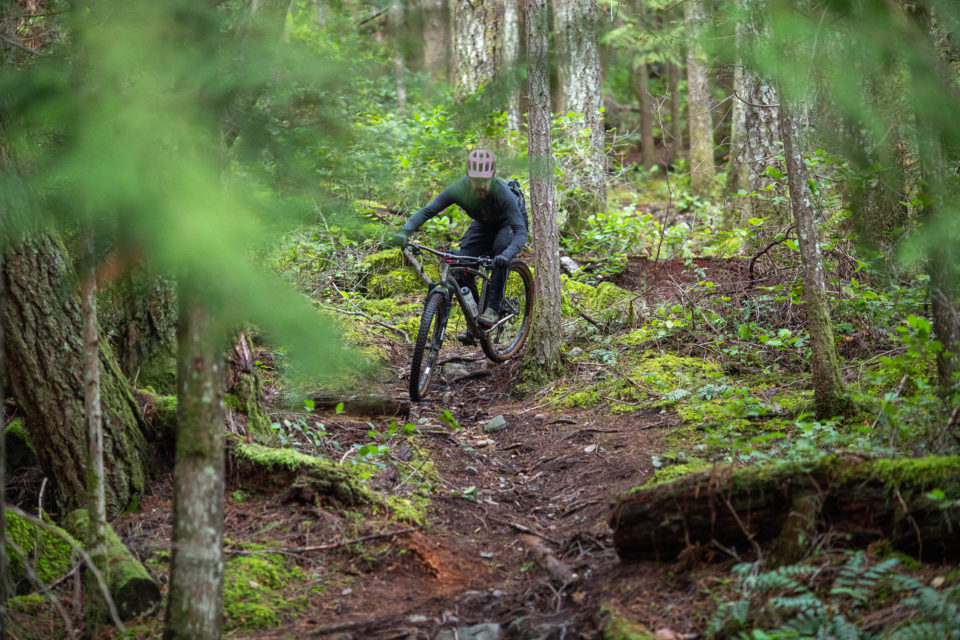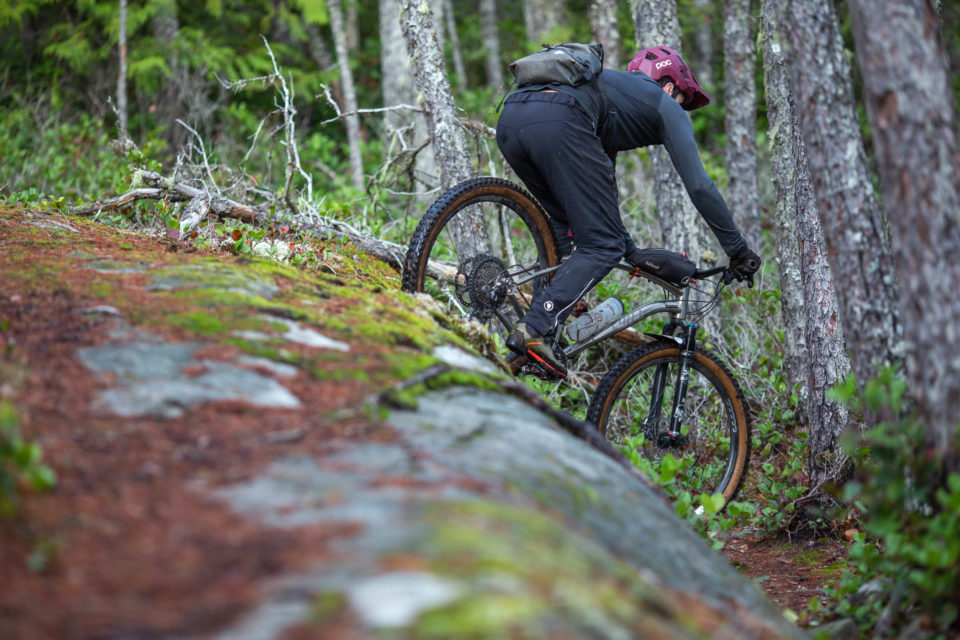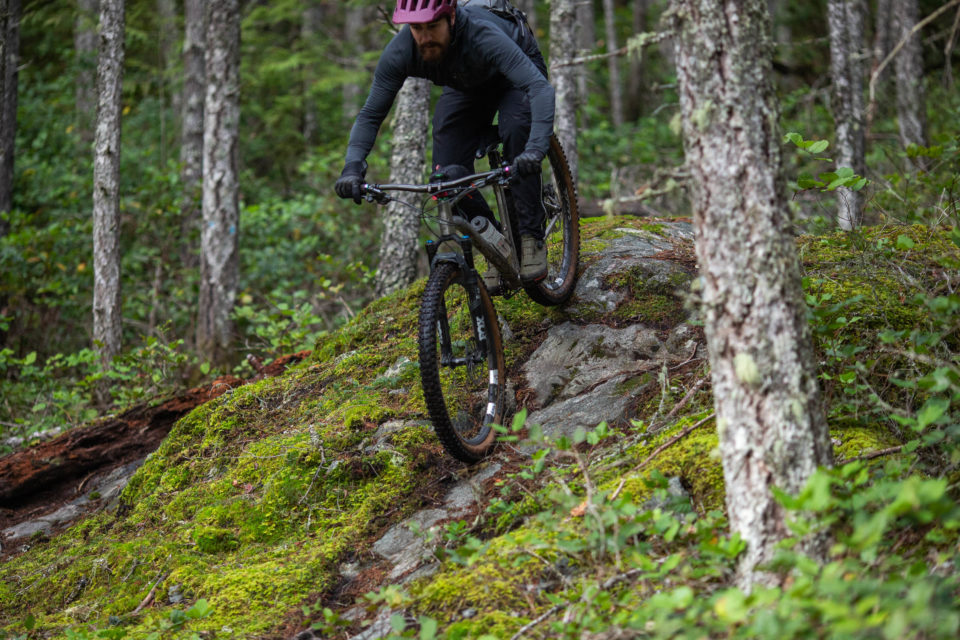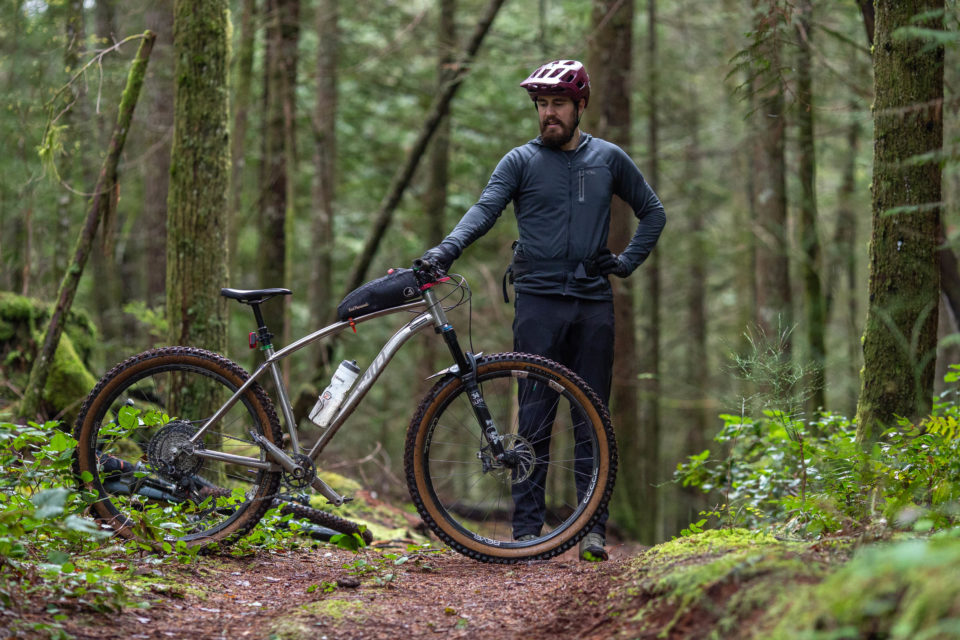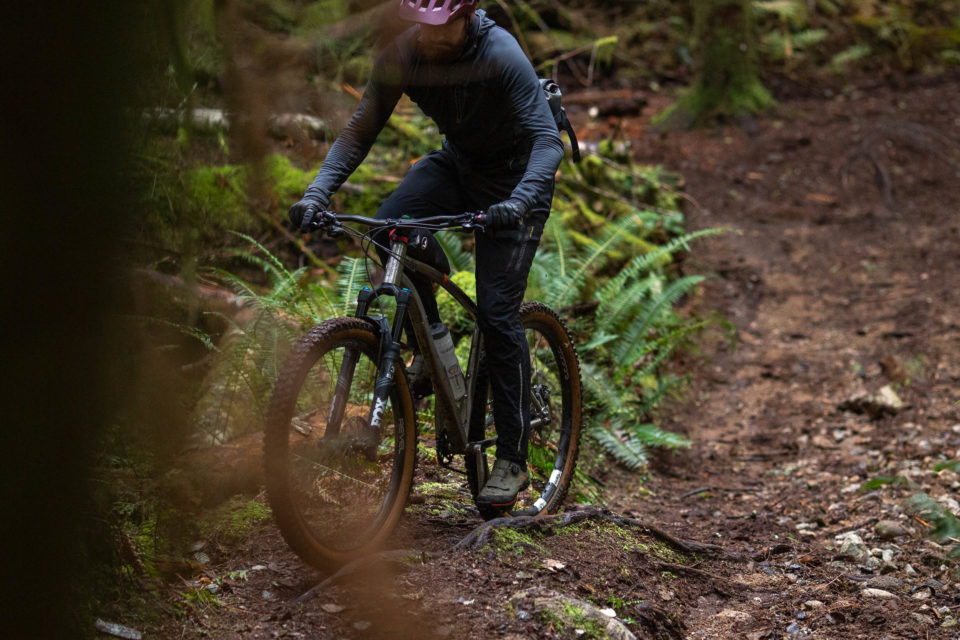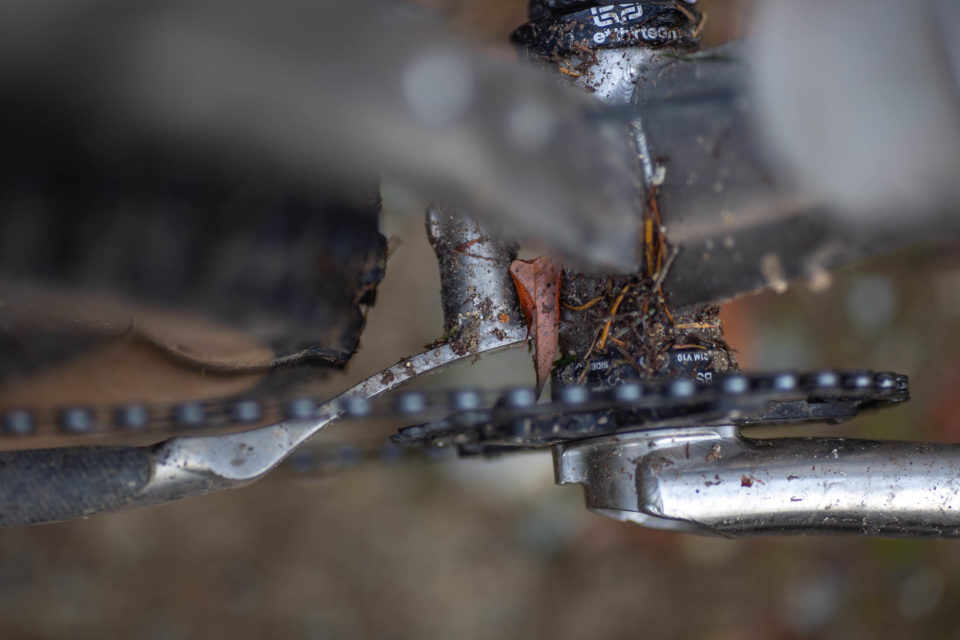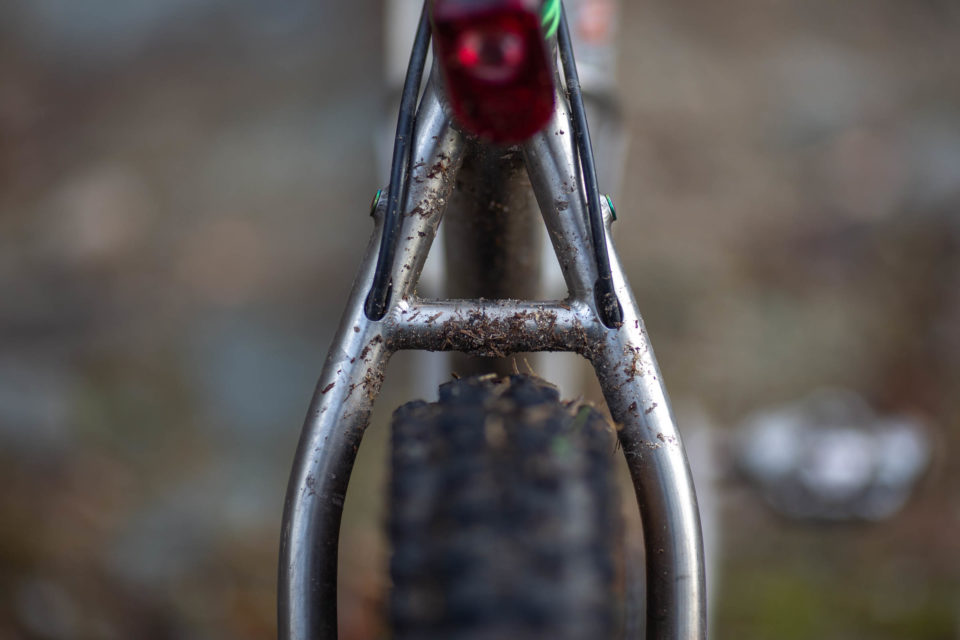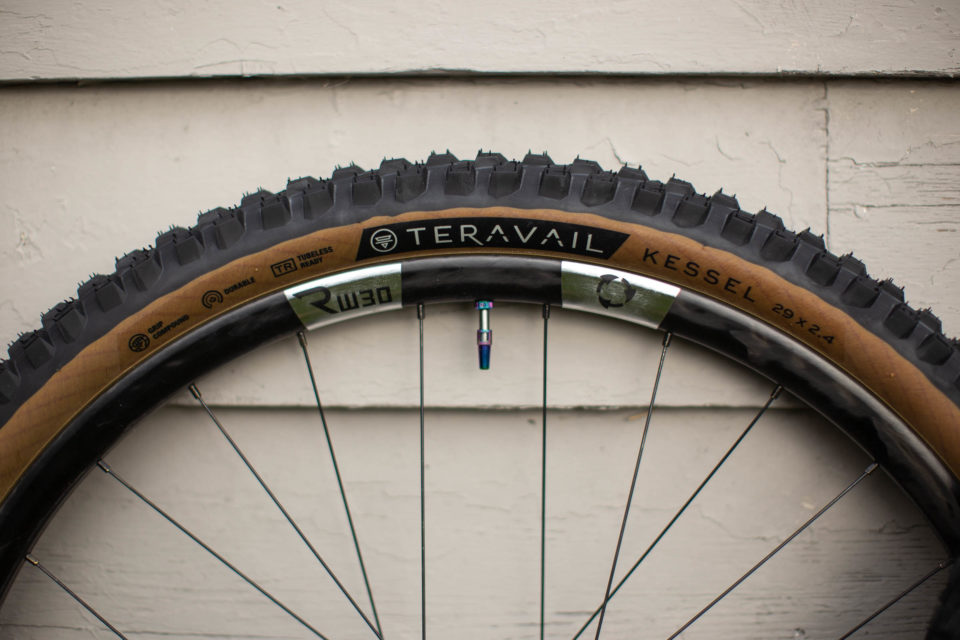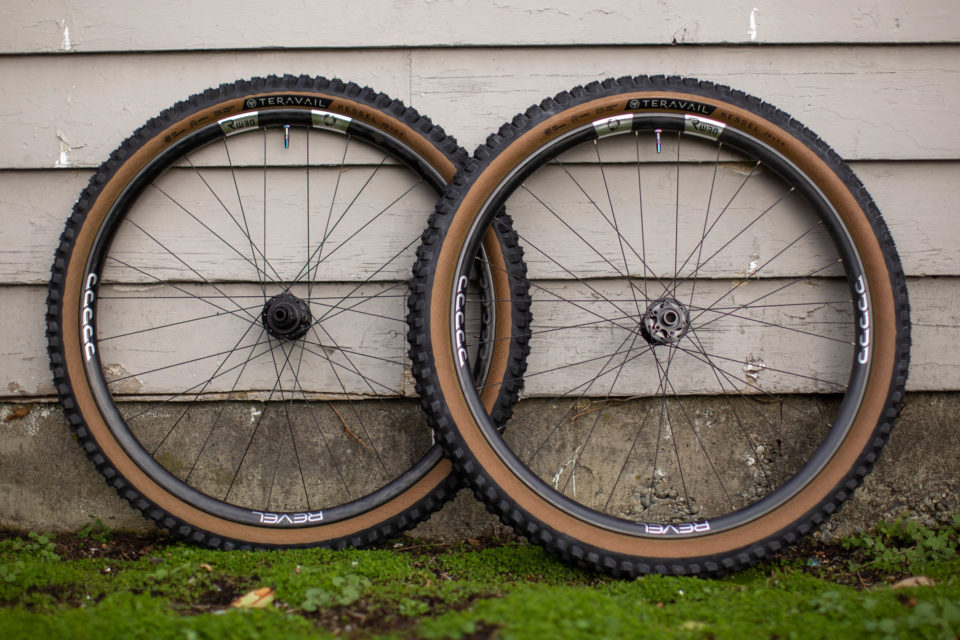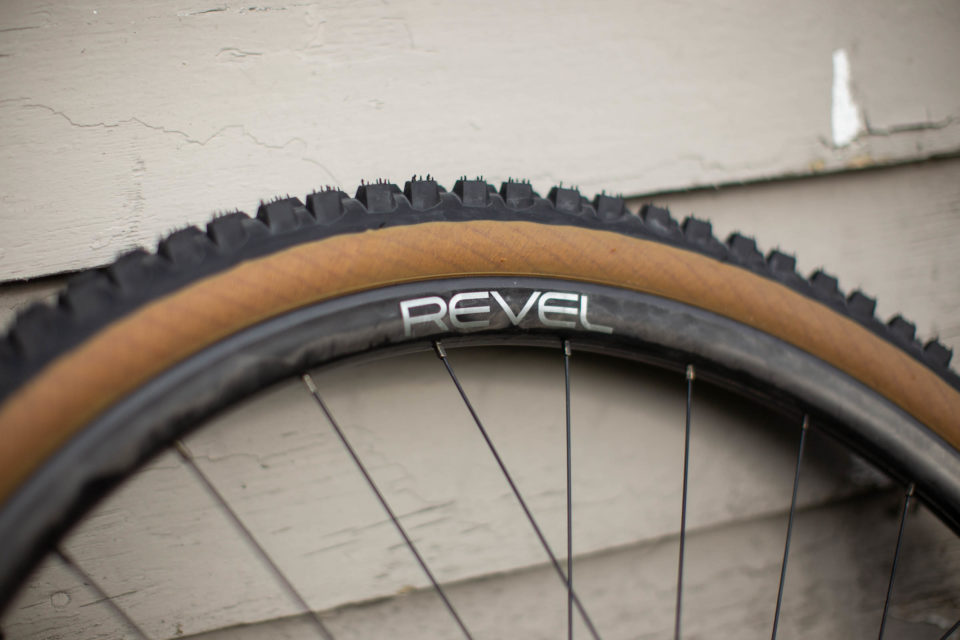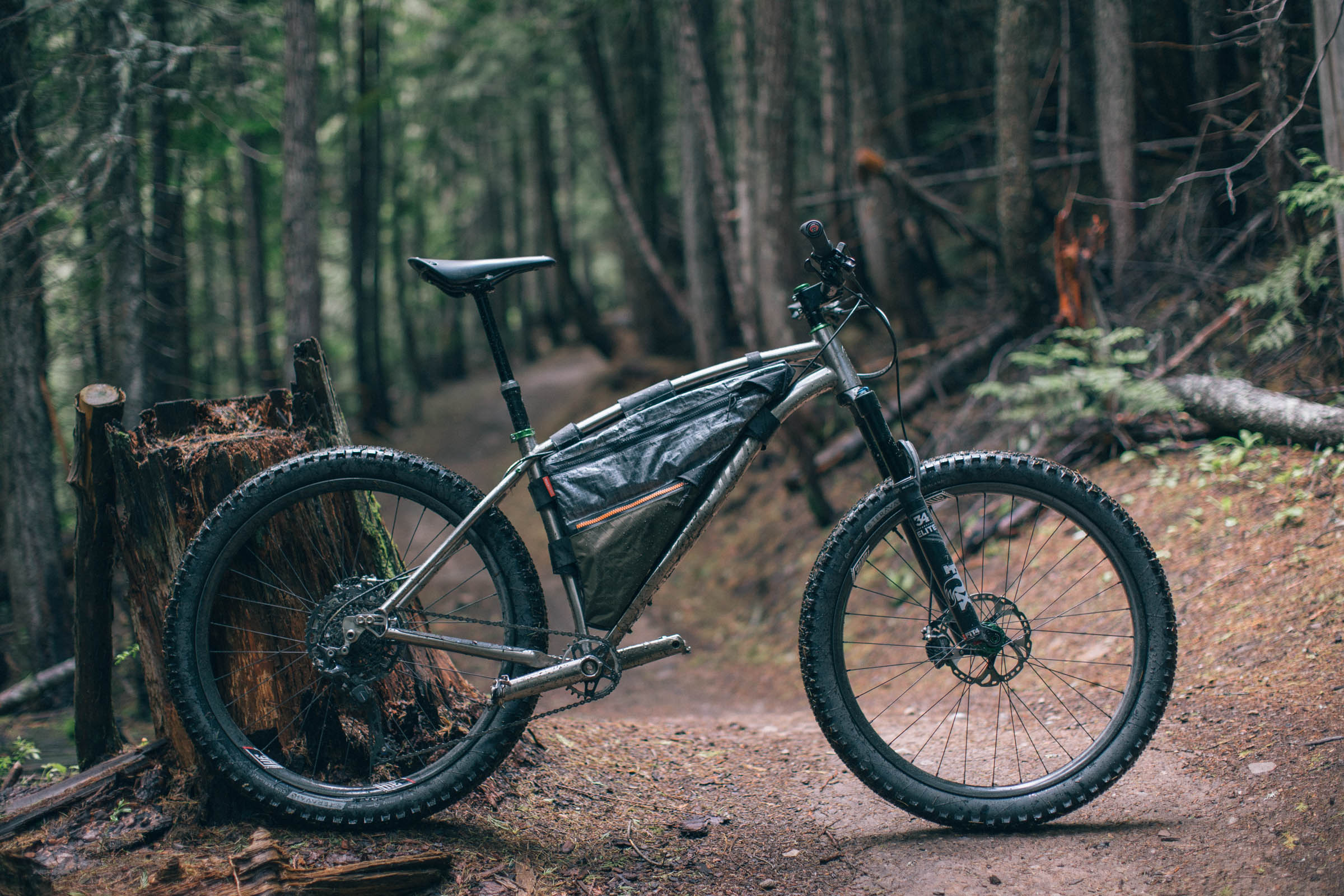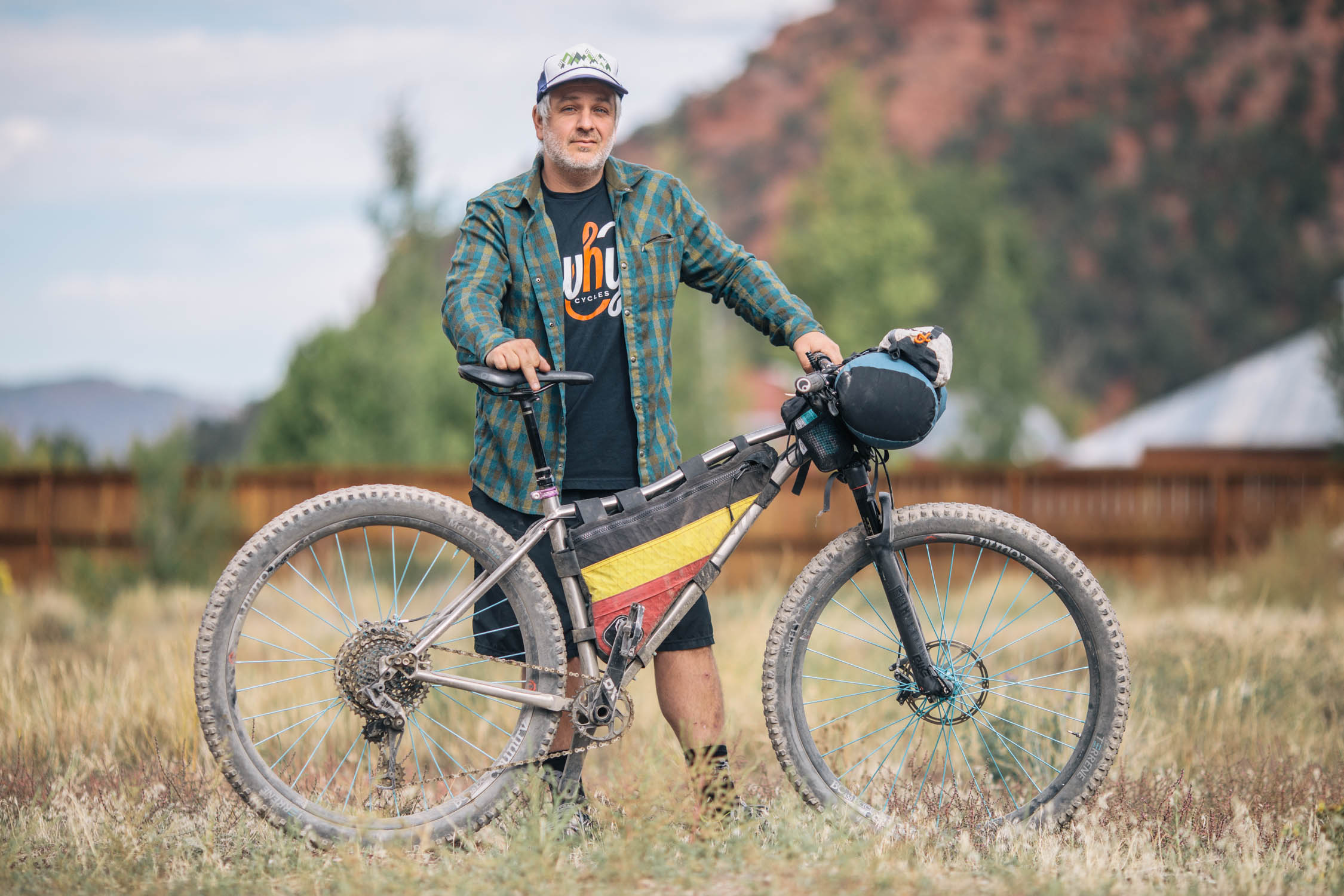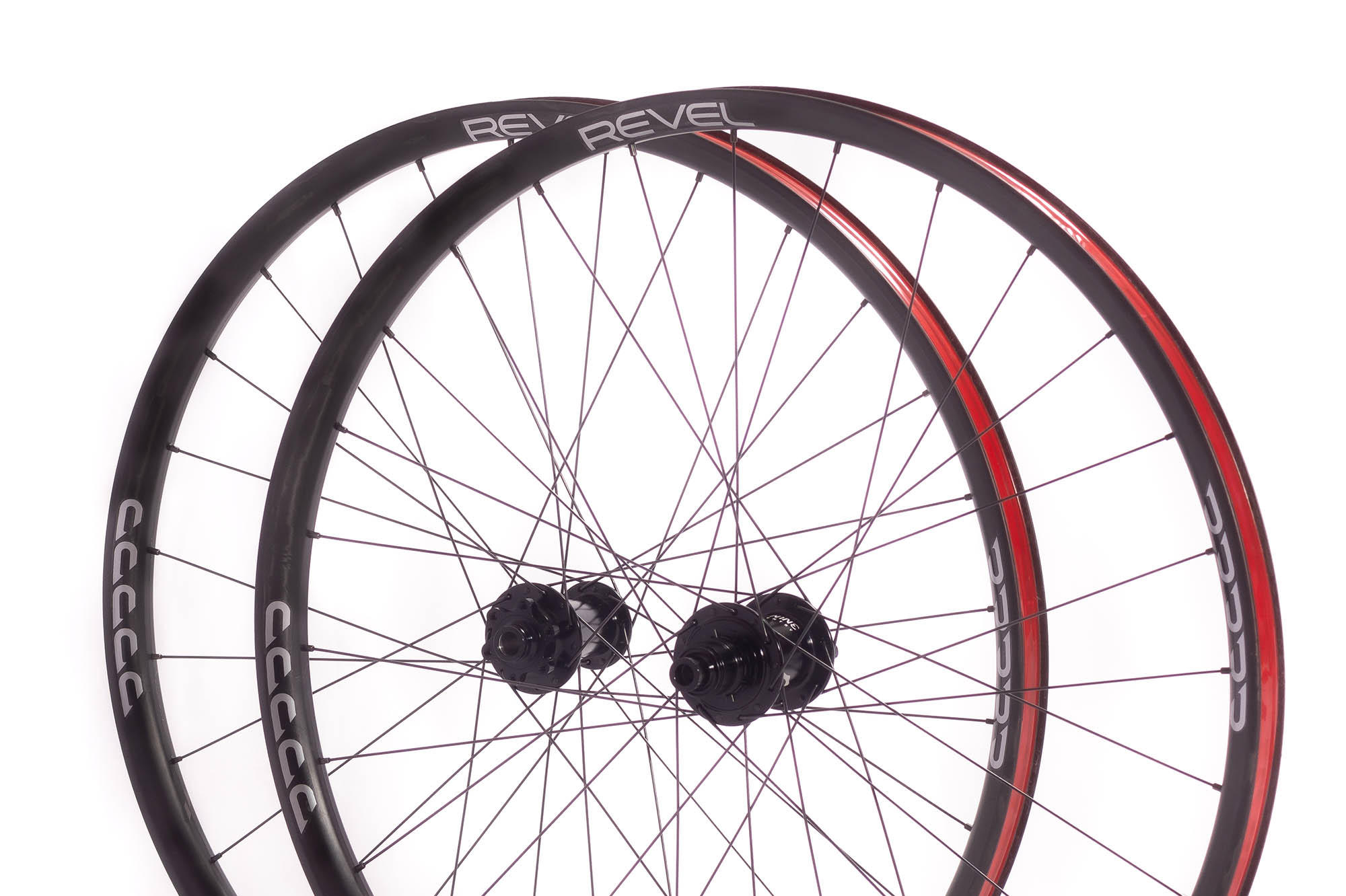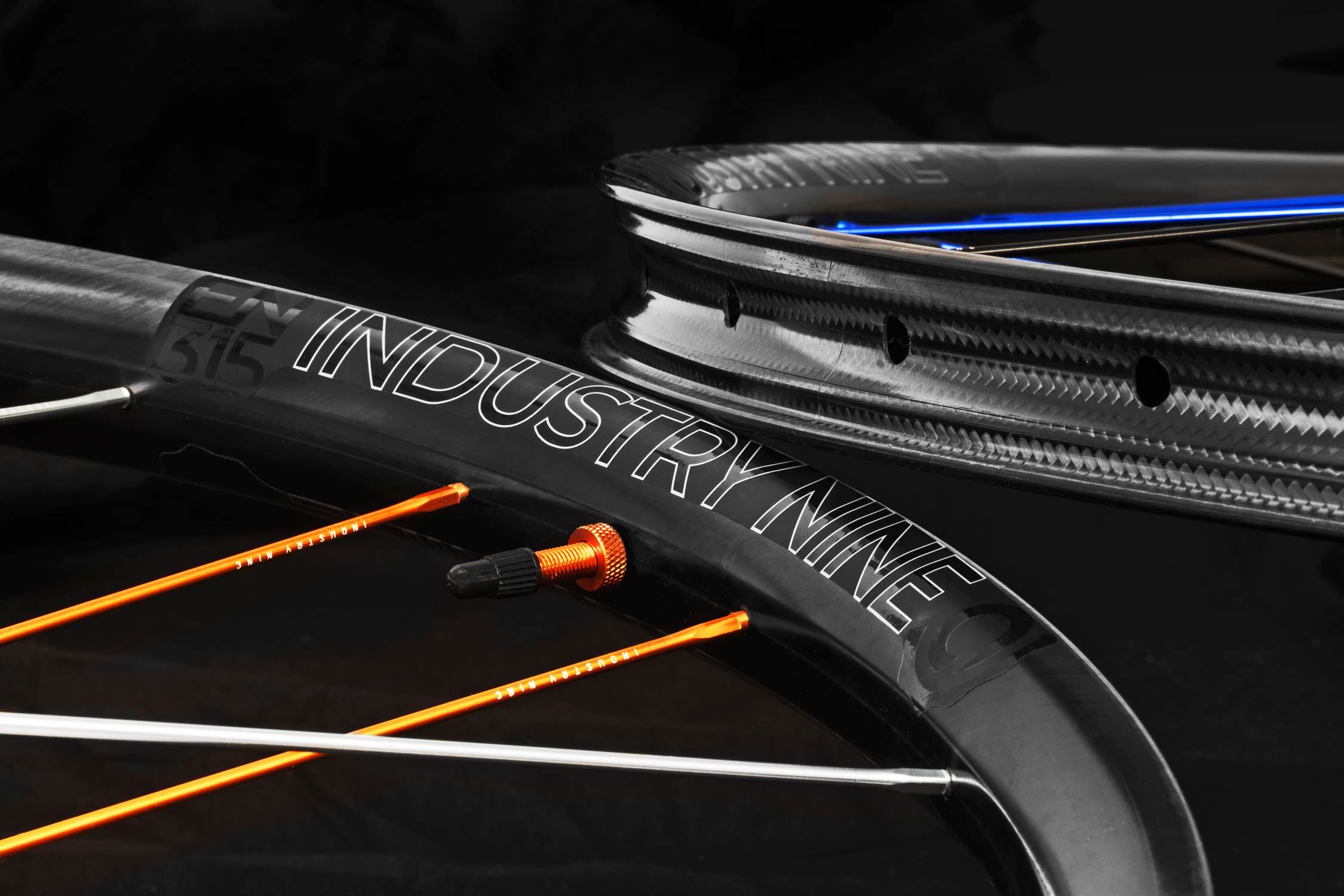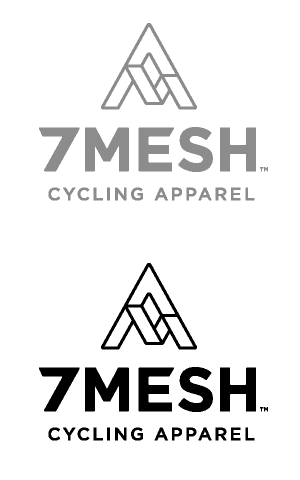Revel Wheels RW30 Review: One Year Later
Revel Wheels’ line of US-made carbon wheels are recyclable, backed by a crash replacement policy, and touted to be stronger and lighter than the competition. Miles has been throwing everything he’s got at a pair of Revel RW30 wheels for the last year and reports back with his findings. Find his review here, alongside his thoughts on converting his Why S7 to a wide trail 29er…
PUBLISHED Nov 26, 2021
Carbondale, Colorado-based Revel Bikes (co-creators of Why Cycles) launched Revel Wheels in early 2020. At the time of launch, they released a 29mm internal width US-made carbon rim that claimed to be 100% recyclable, as well as lighter and stronger than the competition. The rims are made at CSS Composites in southern Utah using FusionFiber manufacturing technology—a process that eliminates environmentally harmful and toxic epoxy resin in the carbon layup and replaces it with a high-performance composite polymer. The end result is a rim that can be recycled to use in other carbon products, a dampened ride quality, and a finished product that both Revel and CSS Composites claim is significantly stronger than traditional carbon rims.
Revel’s wheel lineup currently consists of three models: RW30 (29mm internal width), RW27 (27mm internal width), and RW23 (23mm internal width). The RW30 is offered in both 27.5” and 29” diameters; the others are currently only available in 29”. All three can be purchased as a rim-only or as a complete build with your choice of Industry Nine 1/1 or Hydra hubs and an XD or Microspline freehub body. Complete wheels are assembled in Utah at the same facility they’re manufactured in, built up with Sapim D Light spokes and nipples, with tubeless rim tape and valves installed.
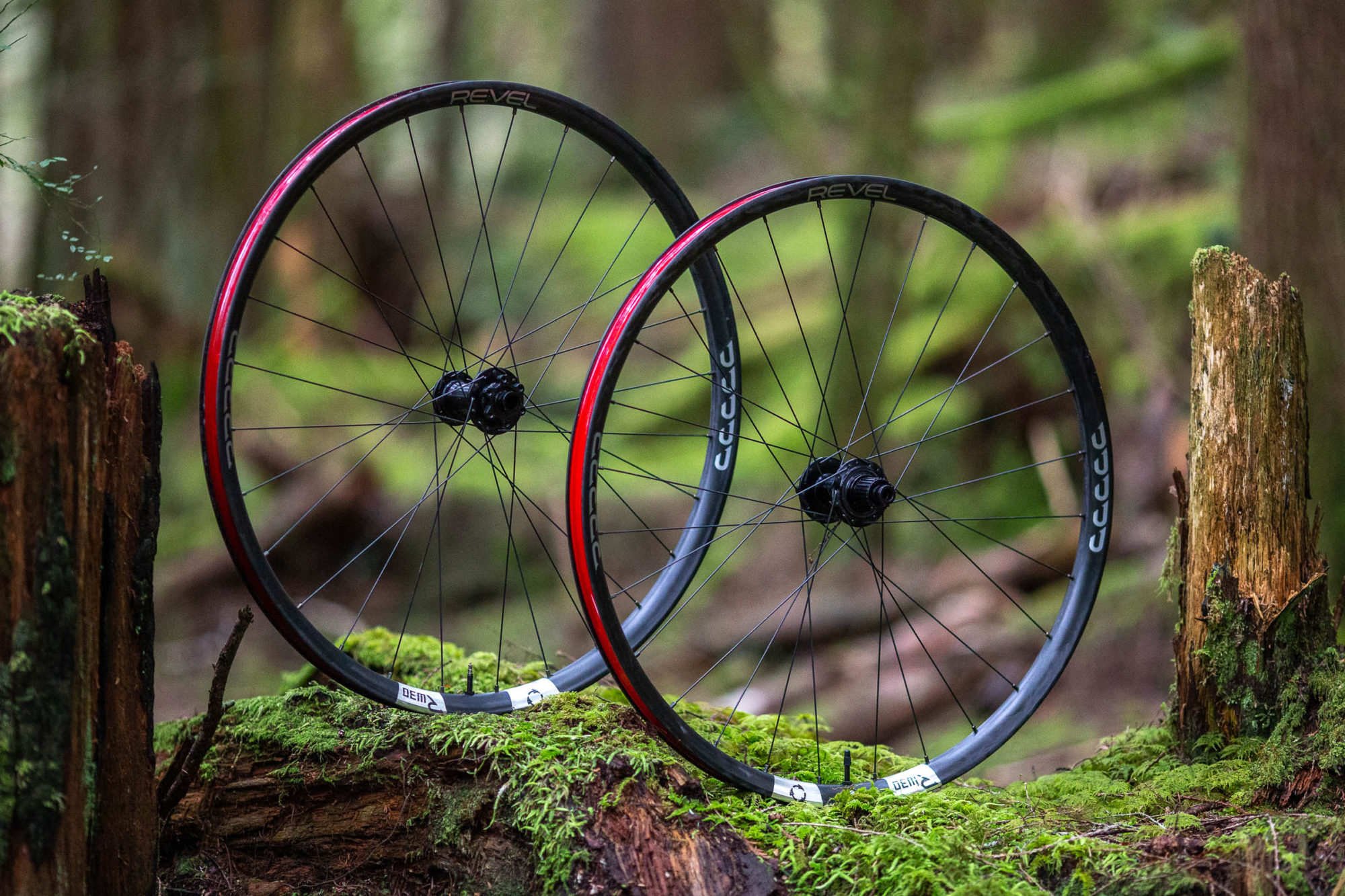
Upcycle vs Recycle
To address some of the concerns raised when Revel Wheels first launched, I reached out for some additional information regarding the recyclable nature of their rims. Here’s what Chris Reichel of Revel Bikes had to say.
“The upcycle vs recycle discussion is one worth having. If a customer breaks a wheel, it has a lifetime warranty. We get it back ASAP, then re-lace with a new rim and ship it back to the customer with as few lost days of riding as possible. The damaged rim will then be ground up into smaller pieces and re-worked into the manufacturing process of other products. These smaller bits of old rim can’t be made into rim again because they are not long fibers anymore, and that’s what is needed for making a rim. But a huge amount of products can be made with short fiber pieces. Anything from a tire lever (like we make) to a stem or a multitude of other things outside of the cycling world, such as the dashboard of an automobile. What excites us the most is that once the rim is made, it never has to see a landfill. And that’s pretty cool. FusionFiber is the future, and we love seeing other companies starting to use it.”
CSS Composites does a great job of laying out the FusionFiber process and how it compares to traditional carbon manufacturing. To summarize, FusionFiber is automated, results in less wasted material, and takes fewer steps to produce a rim. Traditional carbon manufacturing relies on energy-intensive processes like refrigeration and clear coating, while also releasing volatile organic compounds (VOC) into the atmosphere that have proven negative effects on our health and the planet.
Robots vs Humans
My only other experience with North American-made carbon rims are my beloved, and seemingly indestructable We Are One wheels. When I first built up my Why S7 back in spring 2019, I took the opportunity to spec it with the made in Canada wheels and wasn’t disappointed. At the time, I opted for 35mm internal width 27.5” Convert wheels, which paired nicely with a set of 2.8” Teravail Cumberlands. We Are One sets the standard for high-quality carbon rims, and now handlebars and bikes as well, with a finish and look that show off their handmade manufacturing process.
While Revel’s rims are made in the USA, they aren’t made (or assembled) by hand. In fact, the Revel wheels I’ve been testing are laid-up, cross-plied robotically, and flash welded together—a process that Revel claims to leave no space for human error or inconsistencies. Robo-made carbon rims can cure in just 20 seconds, compared to 45 minutes for a traditional carbon rim. It’s quite difficult to discern between the two, as both Revel and We Are One make high-end rims with a comparable raw finish.
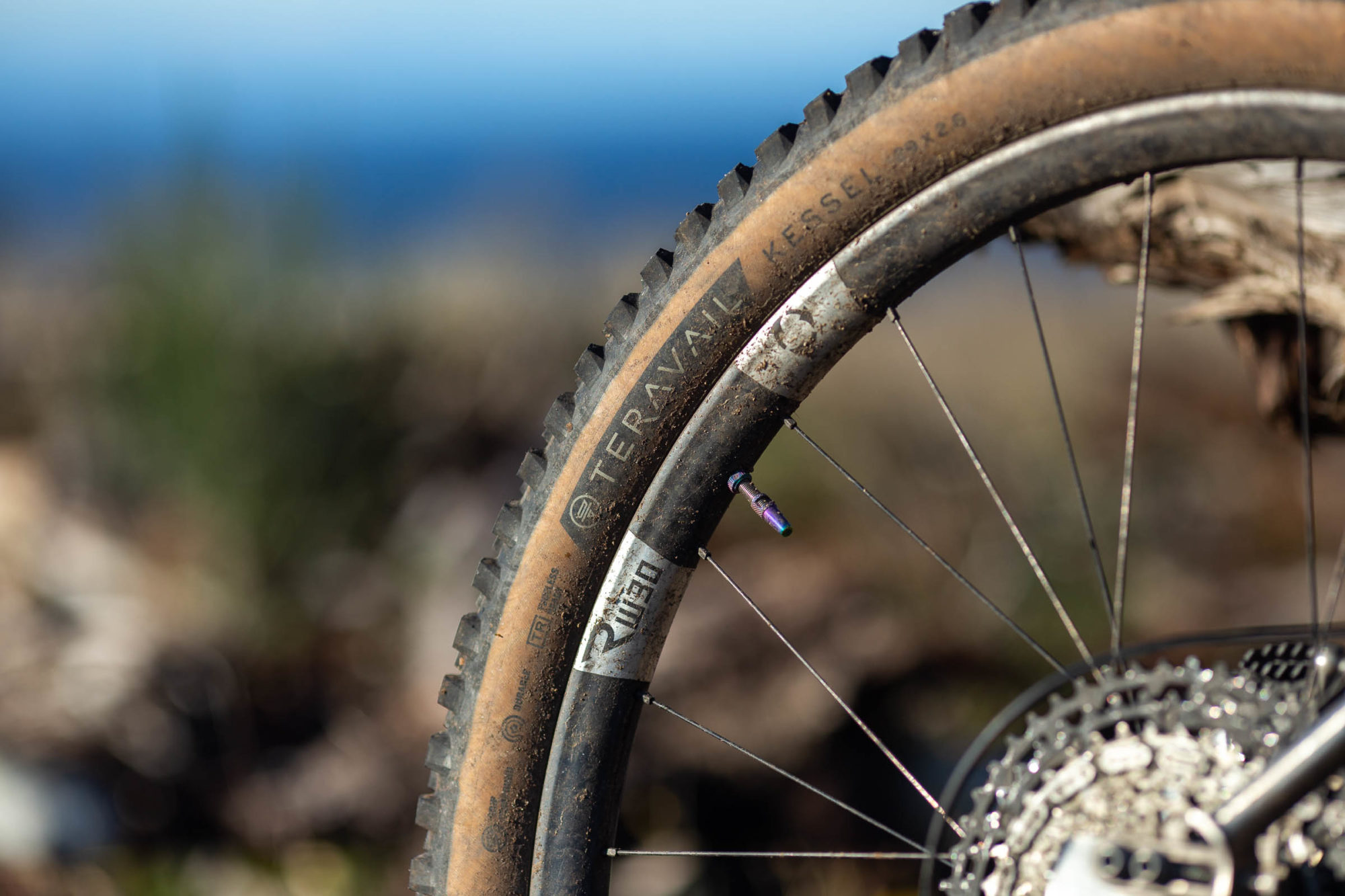
To offer a comparison, We Are One’s Union is probably the closest to the Revel RW30, so I’ve gathered up some specs on each. The biggest difference you’ll notice is that the RW30 is nearly $250 more than the Union, a huge difference for an otherwise comparable rim. The wheelset prices listed below are also based around the same Industry Nine 1/1 hubs and Sapim spokes but see nearly a $400 price difference. There is a lot at play that influences the final price of high-end components like carbon rims. I expect the price difference has a lot to do with the overhead costs associated with FusionFiber manufacturing. Being the first ones to produce a wheel out of their factory, I suspect it wasn’t cheap for Revel.
Union 29”
- Internal Width: 30mm
- Rim Depth: 21mm
- Ideal Tire Size: 2.35-2.8″
- Spoke Count: 28 or 32
- Weight: (Rim Only) 495g
- Price: (Rim Only) $575 CAD (~$455 USD)
- Wheelset Starting Price: $1,599 CAD (~$1,264 USD)
RW30 29”
- Internal Width: 29mm
- Rim Depth: 23mm
- Ideal Tire Size: 2.3-2.6″
- Spoke Count: 28 or 32
- Weight: (Rim Only) 480g
- Price: (Rim Only) $699 USD
- Wheelset Starting Price: $1,975 USD
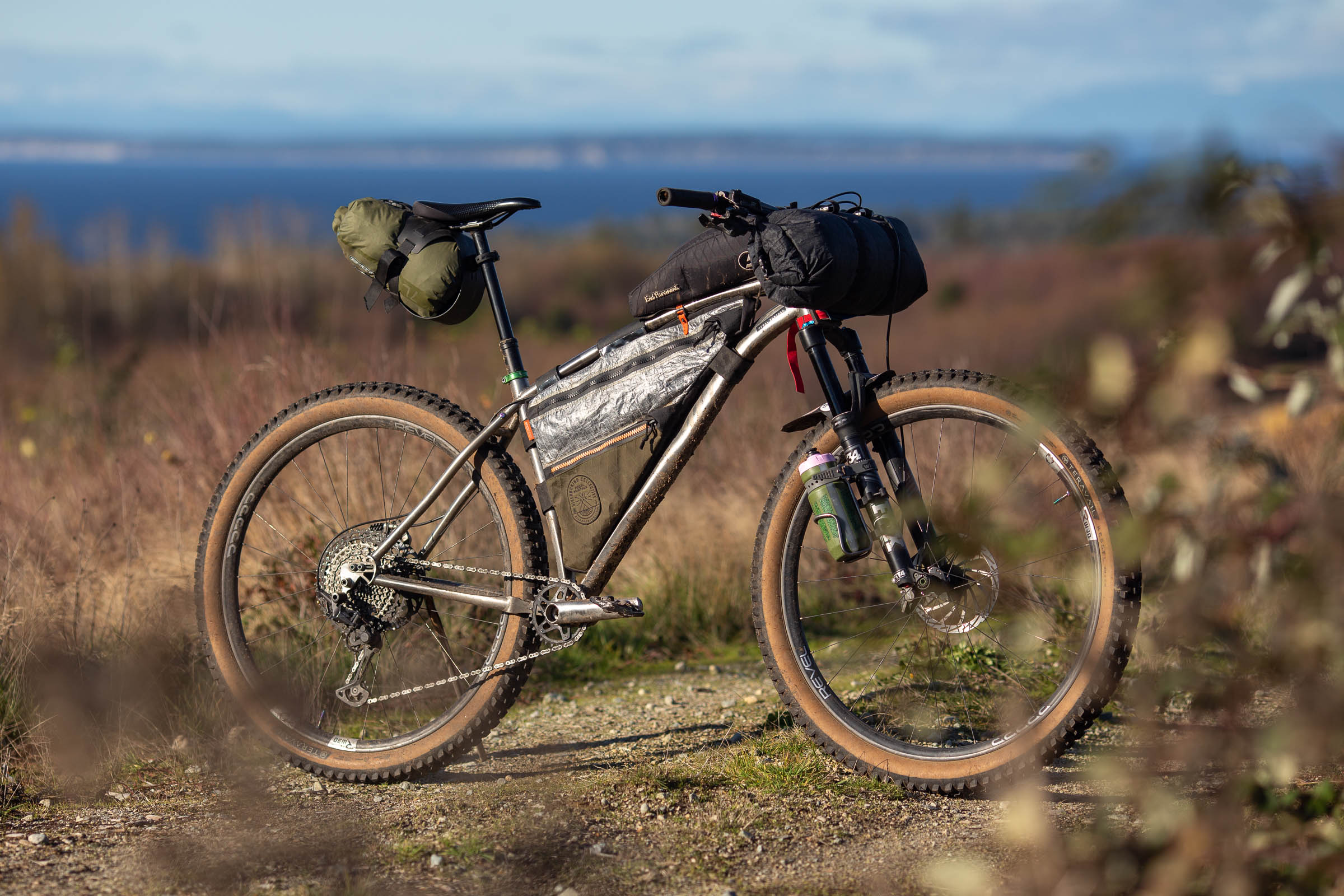
Ride Impressions
Good quality carbon rims can make a world of difference when compared to affordable stock aluminum wheels. One commonly known benefit is shedding weight, thus lowering rolling resistance and changing the dynamic of the ride. Another selling point is the added responsiveness and damping they offer on rough trails, which is sometimes noticeable on both fast day rides and longer backpacking trips. Like other carbon rims I’ve used, Revel’s wheels feel softened, more moderated, and ultimately create the perception of a smoother ride. Ultimately, this might result in less fatigue on long rides. From my understanding about FusionFiber, its unique makeup allows the rims to maintain a high degree of compliance without negatively affecting the stability of the rim structure and the responsiveness of the wheels. They’re lively and have a pop to them that seems to amplify all the best trail bike qualities of my S7. There’s also some truth in Revel’s claims of a quieter, damped ride quality. The majority of my riding has been on rooty, slippery trails here in the Pacific Northwest, and I’ve had my fair share of rim strikes along the way. The RW30 rims shrug off impacts from roots and rocks quietly and confidently and don’t let out a stomach-turning clack that I’ve experienced with other carbon rims. After a solid year of riding with next to no maintenance, the rims continue to roll smoothly and dead straight, which is all you can really ask for.
Revel offers two complete wheel build options, based around either Industry 9 Hydra or 1/1 hubs. My wheels came specced with the latter, and while they might not offer the 0.52° engagement of the Hydra hubs, their dual-phased pawl mechanism is reliable and still plenty fast at 4°. From a bikepacking perspective, the 1/1 is said to be more durable and ends up being $225 cheaper than the Hydra-equipped wheels. If I was mostly interested in technical day rides and the odd bikepacking trip, I might save up some extra coin for the Hydras. With that said, Logan has clocked a couple of thousand miles on his Hydras without any problems and mine have survived two years of riding here in British Columbia without any issues.
The 29 x 2.6” Teravail Kessels I’ve been running mounted and sealed up easily using a floor pump and stayed sealed, rarely needing topping up before rides. I think this can be attributed to a proper rim tape job from Revel, a good rim/tire combination, and I’m sure my trusty Terske titanium valve stems don’t hurt either. While they might be on the upper end of Revel’s recommended tire width, the 29mm internal width felt supportive enough for my riding style. There were only a few times on high-speed corners where I felt the tire roll slightly under me, which was likely influenced by a combination of low tire pressure and rim width. Otherwise, the tire and rim combination has been perfectly suited for the trails here in Powell River—especially when pushing hard and fast down some of the steeper lines. As a bikepacking setup, it’s likely a little overkill, but without much travel recently and all local bikepacking trips being tackled on bikes I’ve had in to review, my S7 has taken on the duties as local trail shredder.
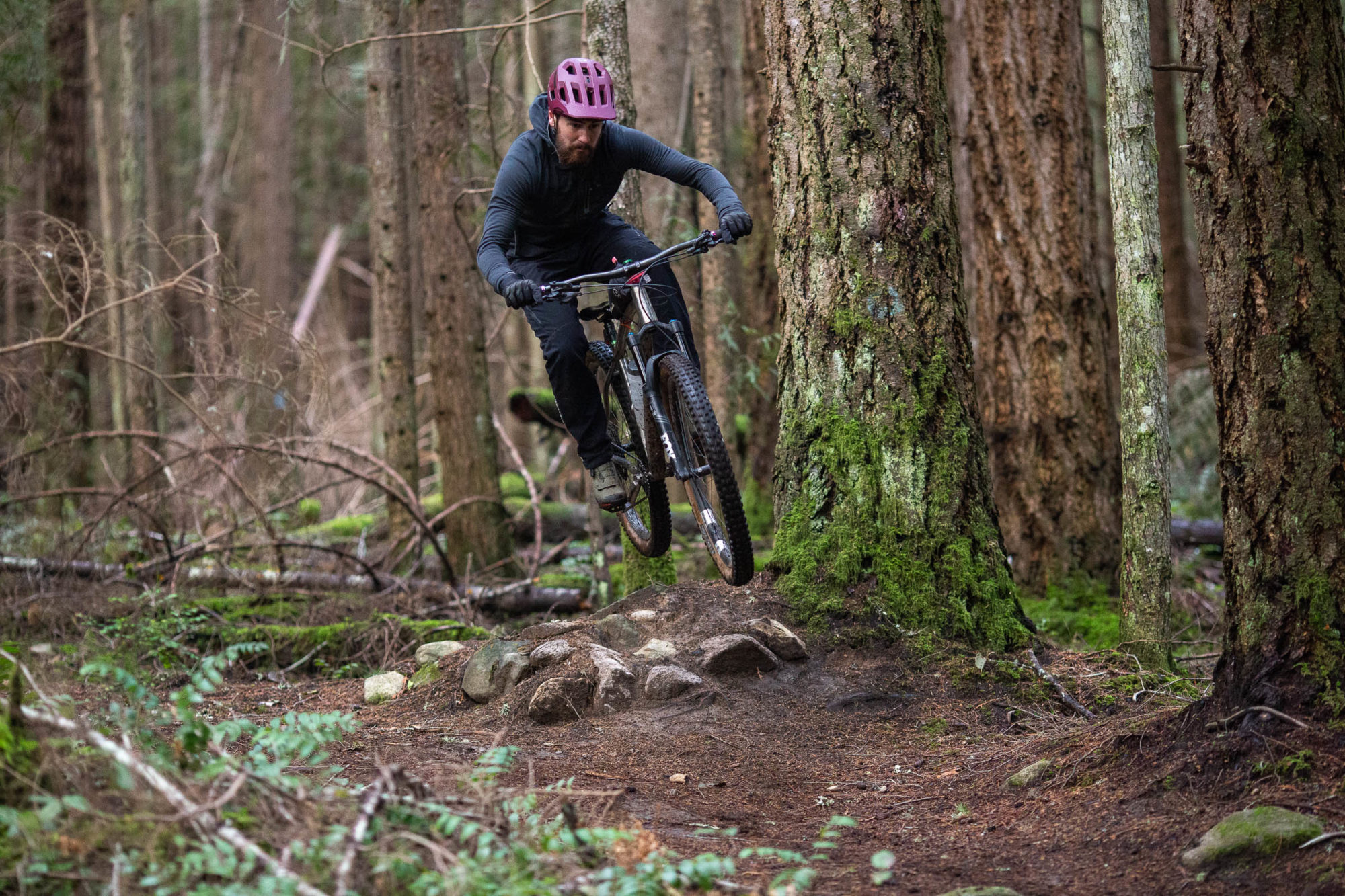
Why S7 as a Wide Trail 29er
After spending a number of years riding primarily 27.5+ hardtails, I was eager to try out my Why S7 as a 29er. Don’t get me wrong, the 27.5+ platform is fantastic and the extra volume of 2.8-3.0” tires does a great job at floating over pretty much anything in your way. As a do-everything setup for bikepacking, it makes sense. And then just a few years ago 29 x 2.6” tires took over the spotlight and haven’t stepped down. Being the co-creators of Revel Bikes and Why Cycles, outfitting my S7 with a set of Revel wheels seemed fitting.
In 27.5+ mode, the S7 felt sure-footed and stable. When I first built it up I was primarily bikepacking, so these were welcomed attributes. However, a lot has changed since the S7 was released back in 2017, especially in the semi-rowdy hardtail world—a segment I’ve been drawn to since moving to the Pacific Northwest. The latest Salsa Timberjack is a perfect example of this genre and makes the S7 feel outdated in some ways. On the size large, the Timberjack’s headtube is a full 1.1° more slack, the seat tube length is almost 30mm shorter, its seat tube is 2° steeper, and it has a longer front end. It handles steep terrain better, can be pushed harder into corners, and while it’s made from 6066-T6 Aluminum and not space metal, it’s a great example of what the 29 x 2.6” platform is capable of.
After reviewing the Timberjack, I needed to experience the Why S7 set up with 29” wheels. I could have chosen any number of 29 x 2.4” tires for a shreddier ride, but as someone who appreciates the stability of wide tires, the move to 29 x 2.6” means a zippier ride and more of a backcountry machine. Thankfully, it was everything I expected, as 2.6” tires offer enough volume to satisfy plus-tire lovers, but they are faster, lighter, and can be paired with widely available 29-33mm internal width rims. I found the S7 climbs better, descends faster, and isn’t nearly as sluggish on the flats—one of the major downsides of chunky 27.5+ tires. There are also rotational weight savings when making the jump to carbon wheels, which helps offset the weight of heavier wide trail tires.
While 2.6” tires are definitely testing the S7’s clearance, they fit without rubbing and completely transform how it rides. Even as a five-year-old bike, the S7 is still a fantastic and totally capable rig. As mountain bikes get longer and lower, the S7 remains tight and comfortable in the front end, which is actually a major plus for bikepacking. It has a slightly more upright and relaxed position but rarely feels out of place on technical terrain. I’m quite curious to see what Why’s plans are for the S7 moving forward. Their newer hardtails, the El Jefe and Wayward, don’t quite compete with the S7, but almost make it feel like it should be a little more rowdy. I guess we’ll have to wait and see!
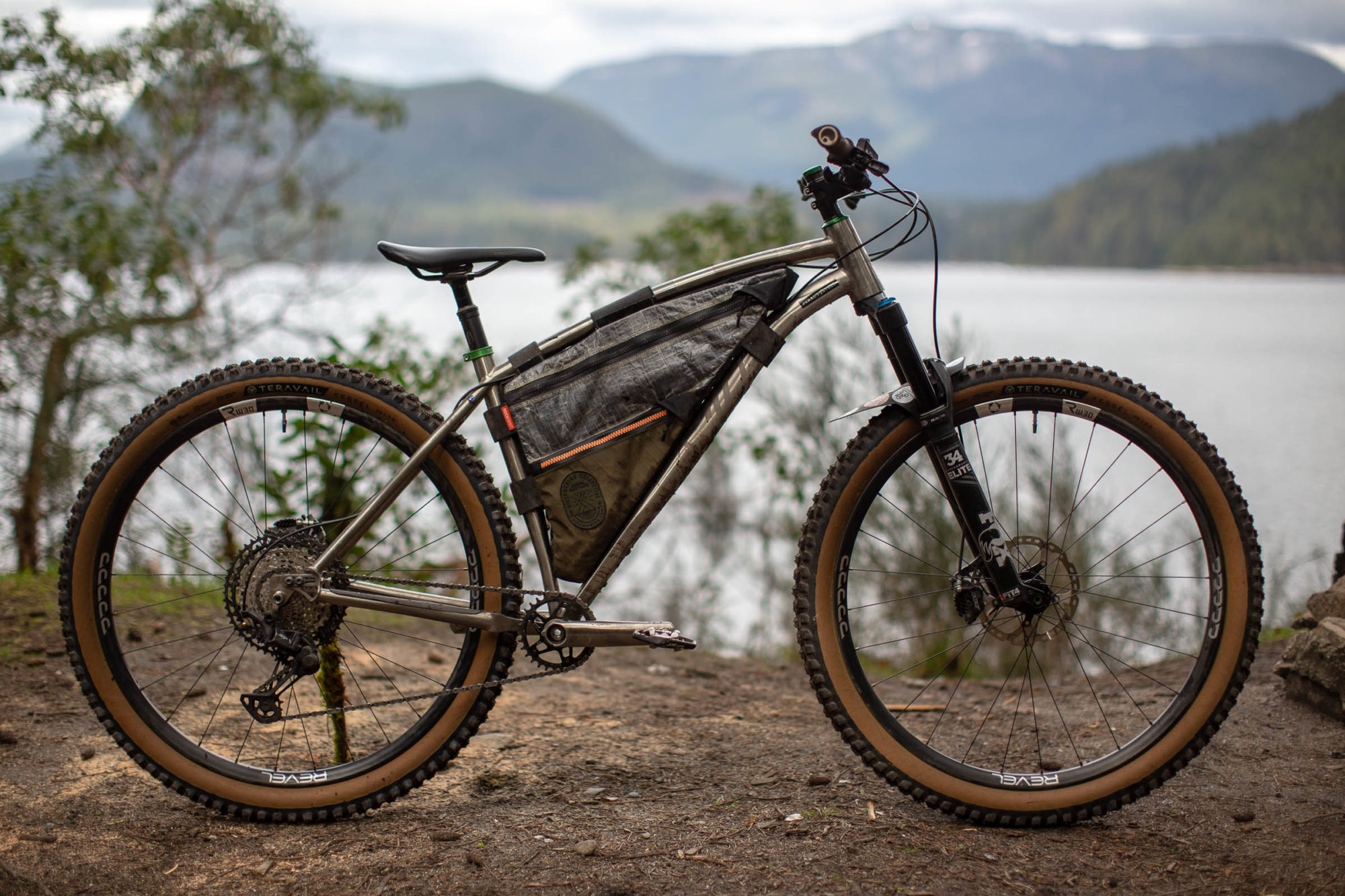
Pros
- Manufactured using less harmful chemicals and more efficient processes that are better for the workers and the planet
- Recyclable carbon is a step in the right direction and better than traditional non-recyclable carbon
- Smooth and quiet ride qualities
- Lifetime warranty with replacements and repairs all completed in the US
Cons
- Notably more expensive than many other carbon wheels
- Somewhat limited width options
- Not quite 100% recyclable
- 28 spokes on complete wheels might not be enough for some, although I’ve had no strength issues
- Spokes: 28 or 32 (rim only) or 28 (in wheelset)
- Colors: n/a
- Price: Wheelsets at $1,975 / Rim only $699
- Weight: 873 grams (front) / 1025 grams (rear)
- Place of Manufacture: Utah, USA
- Manufacturer’s Details: RevelBikes.com
Wrap Up
Carbon manufacturing isn’t good for the environment, period. However, consumers are going to continue purchasing carbon rims, so having an option that is potentially less toxic and more recyclable is a good thing, even if every last bit of carbon can’t be reused. And if a higher-priced carbon rim results in more sophisticated recycling processes down the road, then I think Revel has done some good. The Revel RW30 wheels have proven to be exceptionally durable, smooth riding, and are a noticeable improvement over alloy rims.
Is the ride quality worth the high price tag? I think if you’re the type of person who sells gear after a couple seasons or constantly changes bikes, investing in Revel’s wheels probably doesn’t make much sense. However, if you’re looking for a high-end carbon wheelset that’s going to last you a long while, if not a lifetime, then I think it makes sense to support a company that’s at least considering the environmental impacts of traditional carbon manufacturing and paving the way for future development.
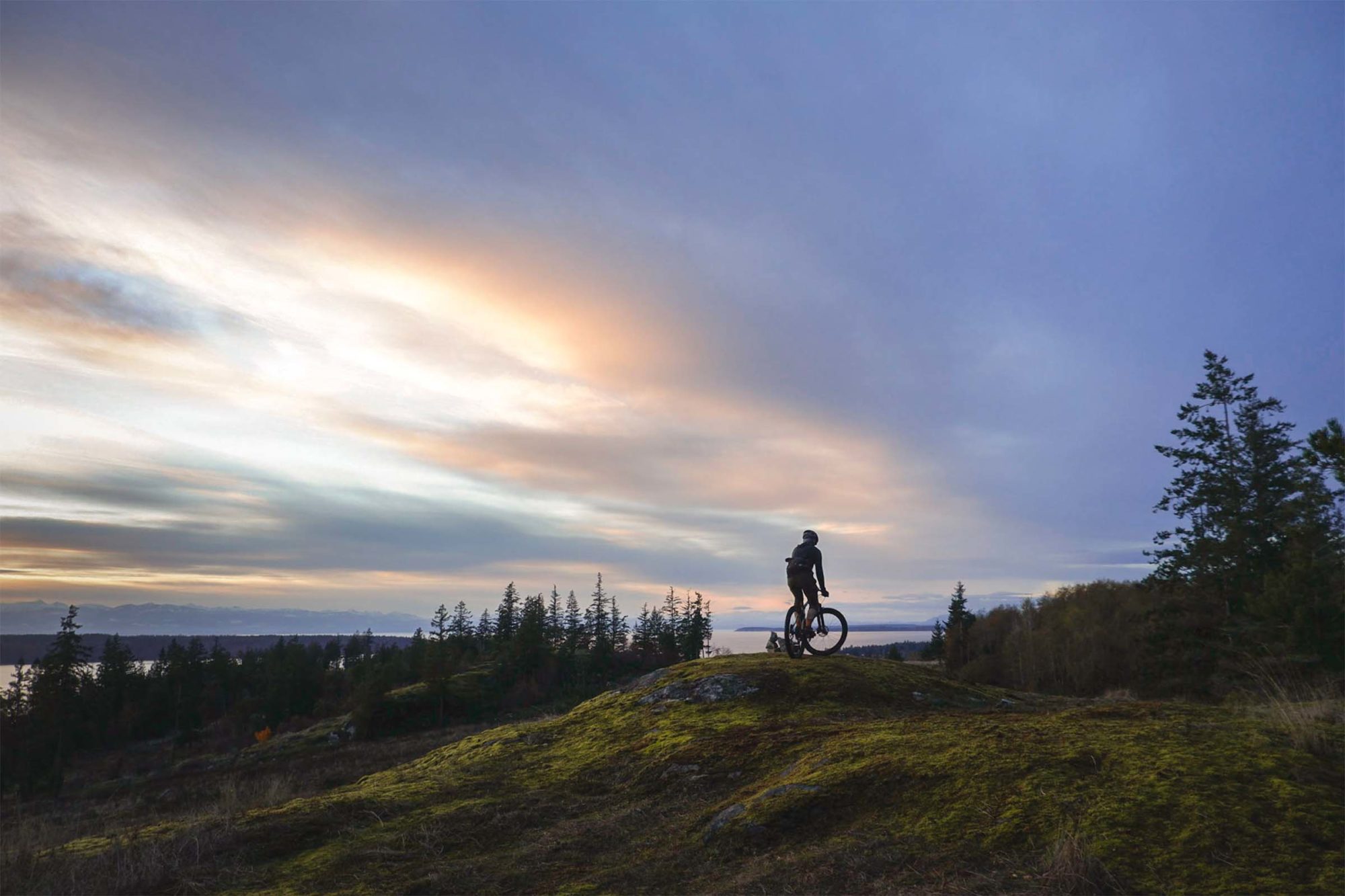
Related Content
Make sure to dig into these related articles for more info...
Please keep the conversation civil, constructive, and inclusive, or your comment will be removed.






